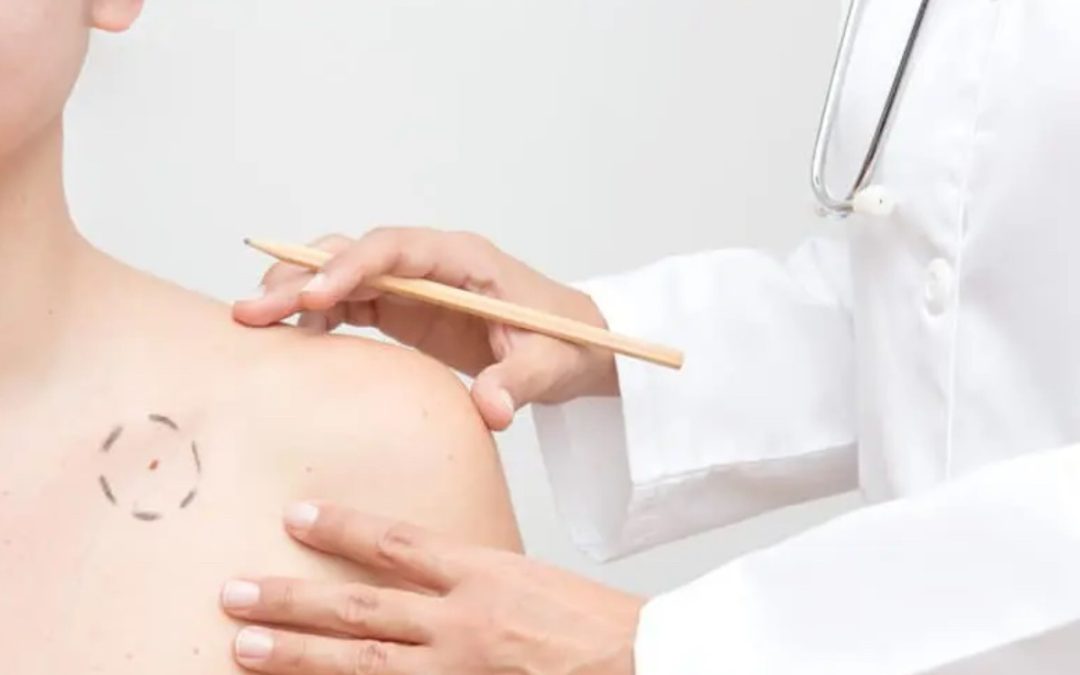WHAT HAPPENS DURING SKIN CANCER REMOVAL?
What to expect at your appointment
On your first visit, you usually have a full skin examination. Dr Mackenzie the decide if and how a skin lesion needs to be treated. Your care and treatment depends on the type cancer you have, its size and where it is, how far it has advanced (the stage) and your overall health. The final decision about what treatment you have is yours.
What is involved in the operation?
Usually, this skin cancer surgery is carried out under local anaesthesia or under general anaesthesia if it is more extensive or in a difficult location. Sometimes it is a patient’s choice. The procedure can take between 30 and 90 minutes depending on the extent of surgery. Multiple lesions can be removed at the same time.
The skin lesion is removed with a margin of normal appearing skin around to ensure that it is fully removed. The size of this margin is usually in the region of 3 to 4 mm but for some skin cancers can be up to 2 cm. This will depend on the exact type and size of the skin cancer. The lesion will be sent away to be examined by pathologist.
The skin is usually stitch together directly or a local flap or a skin graft is required to reconstruct the defect. A local flap involves moving skin from the surrounding area in a carefully planned way so that the wound can close nicely. The borrowed skin is then stitched in place. A skin graft involves transferring skin from one area to another to heal the wound. The skin graft is then stitched into its new position. Where it is taken from (the donor site) is either stitched together or allowed to heal from the remaining bottom layer of skin depending which type of skin graft is used.
Dr Mackenzie will apply a dressing to the operation site, which will need to be left in place for a few days. You will be given additional dressings as required, and any appropriate post-operative medication will be prescribed.
What can you expect after the operation?
As the local anaesthetic wears off, the operation site may feel sore. Painkillers such as paracetamol will help.
You should take it easy for the first few days and take special care not to bump or knock the operation site. If you have had a lesion removed from your face, it may be helpful to sleep using some extra pillows as this will help to reduce swelling and bruising. If the skin lesion was on your arm or leg, it is best to try to elevate the limb as much as possible for the first few days.
You should not apply make-up to the operation site until you have had your stitches removed.
You need to keep the wounds dry for 48 hours. You can shower then and gently dab the wounds dry. You may use a hairdryer on a cool setting to speed up drying. In the face, stitches will need to be removed between 5 and 7 days following surgery. When possible, elsewhere on the body, Dr Mackenzie uses absorbable sutures, which do not need to be removed. If she has to use non-absorbable sutures, they will need to be removed between 10 and 14 days following surgery. It is usual to have some swelling and bruising in the area in the early stages.
A skin graft will usually be left undisturbed for 5 to 7 days and will have a dressing on it that will need to be kept clean and dry until then. If you had a split thickness skin graft, a well-padded dressing will be placed on the donor site as this may ooze for a few days. Unless problematic, this dressing should be left undisturbed until your follow up appointment.
It is usually possible to return to light activities the next day, but strenuous activities will need to be avoided for about 2-4 weeks.
The area is usually healed in 2 to 3 weeks, but the scar will continue to strengthen and then to soften and fade for 12 to 18 months afterwards.

Recent Comments